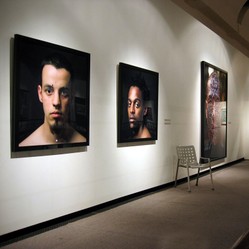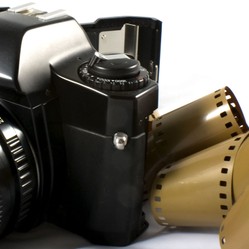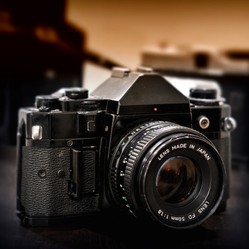Frequently photographs are submitted for appreciation, criticism and discussion at club gatherings, in online portfolios and to the editors of amateur magazines.
Inevitably the opinions thus evoked may reveal more about the person voicing them than about the work they are supposed to evaluate. In fact, art criticism at its best is a literary form in its own right designed to inform or entertain the public or just show off the brilliance of the critic rather than to help the artist to do his job better next time.
Yet amateurs seeking criticism do so mostly in the hope of benefiting from the encouragement and advice they may receive. Anxious to be helpful, the expert is easily tempted to put forward emphatic views by making the most of any little point he happens to notice or by groping for concrete recommendations, too often based only on his own vague beliefs or established habits of thought.
Firm adherents of some school of thought, ideologists and reformers are notoriously aggravating as critics and so are, of course, active artists who have developed their own individual approach to the very type of work they are supposed to review. The critic with vigorous or rigid standards cannot be expected to possess the necessary tolerance and sympathy for work not on his own level.
And apart from the critic's own qualifications, isolated opinions based on a single piece of work are apt to be misleading. It is impossible to judge another photographer's work from a single print. The critic must see at least a few of his photographs to be able to detect what the photographer is after, what may be intentional, and what is accidental in his style and technique.
 | Criticizing Photographs This brief text is designed to help both beginning and advanced students of photography better develop and articulate thoughtful criticism. Organized around the major activities... |
Certain points merit examination in any photograph:
1) The photographer's purpose in taking it.
2) Has his technique been wholly and successfully subordinated to that purpose?
3) Would it be possible to produce from the negative a better print?
4) Was the photographer's approach original or imitative?
The purpose of the photographer in making a particular picture must receive first consideration; whether his work appears to fulfil that purpose or fall short of it is, in fact, the only point that really matters. If the man behind the camera happens to be solely concerned with some rare or subtle expression in his subject's face then he should be criticized only on account of anything that may distract from that expression, no matter whether the distracting element by itself represents good or bad photography. Thus not even the degree of technical perfection is an unfailingly reliable guide to criticism.
Yet technical criticism proper is comparalively easy or, at least, harmless, even if it falls into errors. Objections like "This is overexposed, this is unsharp, this is too contrasty" can be readily checked and so possibly refuted by anybody looking at the same picture. Often enough what may appear to be a technical fault is a deliberate mark of style.
Critical suggestions about how to crop an image, angle it differently, throw back this detail or bring out that, may serve a useful purpose, as long as all this advice does not conjure up an altogether new conception unrelated to the photographer's real intention. Criticism is reasonably safe if it is confined to discussing shifts of emphasis rather than to changes in subject matter; it may usefully suggest leaving out something from the author's work but it would be grotesque for it to demand the inclusion of anything additional. You can criticize only what is there.
Limitations
The critic ventures on to very shaky grounds indeed once he airs ideas of his own about how the picture should have been taken. He can seldom be sufficiently acquainted with all the relevant conditions to be able to pronounce really valid opinions on them. What is still more important, he is never in the position to prove his point if challenged. Judges in court aim at judgements which are both just and appear to be just; by the same token, critics must aim at opinions which are both justified and can be proved to be so.
This condition is not met by setting forth the critic's ideas in diagrammatic reconstructions which purport to represent some pictorial analysis or outline an improved version of the photograph criticized. Diagrams are very useful to picture some general statement, but in order to translate a particular photograph truthfully they would have to be drawn, not by hand, but by the same lens that took the picture and at the same spot where it was taken. Sketches not only eliminate most photographic values but may distort and evade awkward issues by using a non-photographic idiom. It is just as futile to suggest improvements to a photograph in an elegant drawing as it would be to try to correct a piece of sculpture by whistling a tune about it.
The critic is privileged to appear clever at the expense of the work criticized but it is an abuse of that privilege to make up arguments extraneous to the subject, to pronounce opinions as if they were rules and to claim ultimate authority in a realm of abstract speculation where none can possibly exist. Any honest critic realizes that as it is his job to be an expert in afterthought, he should at least try to avoid any pretence to creative talents. "Creative" criticism is a contradiction in terms. A critic should offer the product of his experience, knowledge and skill acquired from studying the work of others rather than his own creative urges, prejudices and frustrations. Looking at a print he may be able to suggest that the photographer ought to take more care of his technique or that he should change some of his tools or that he might just as well give up the game altogether. But, being another man with eyes and ideas of his own, he can never take a hand in the actual work without turning it into something that was probably never intended.




 Photographic Styleon 10/14/2011
Photographic Styleon 10/14/2011
 Interchangeable Lenseson 09/28/2011
Interchangeable Lenseson 09/28/2011
 Negative Blisters and Blemisheson 09/17/2011
Negative Blisters and Blemisheson 09/17/2011
 Photographyon 08/22/2011
Photographyon 08/22/2011



Comments